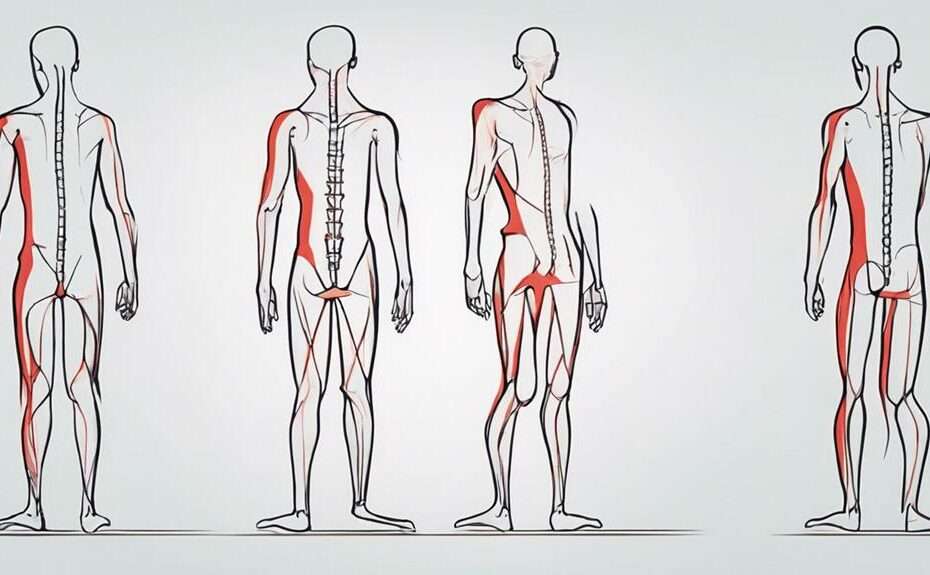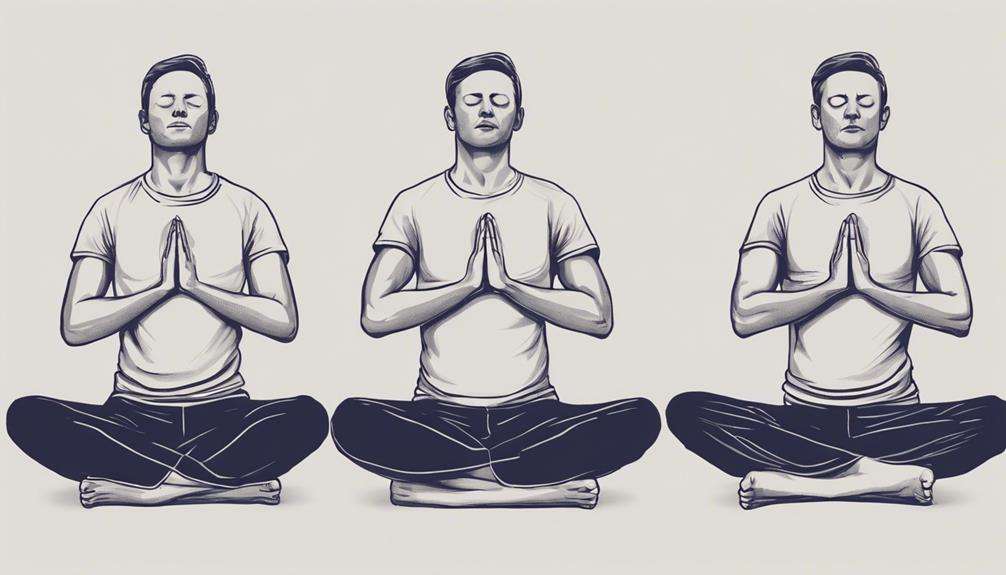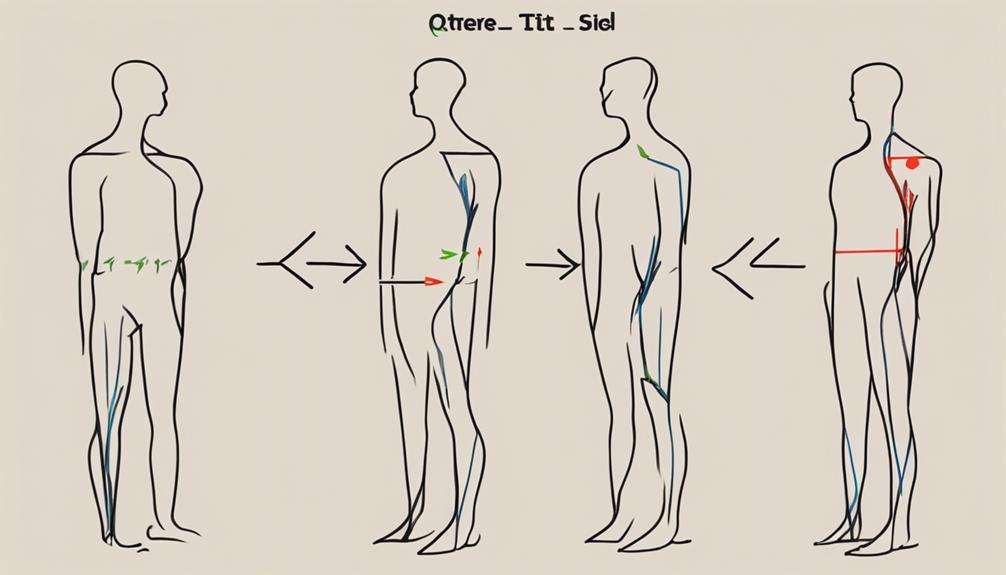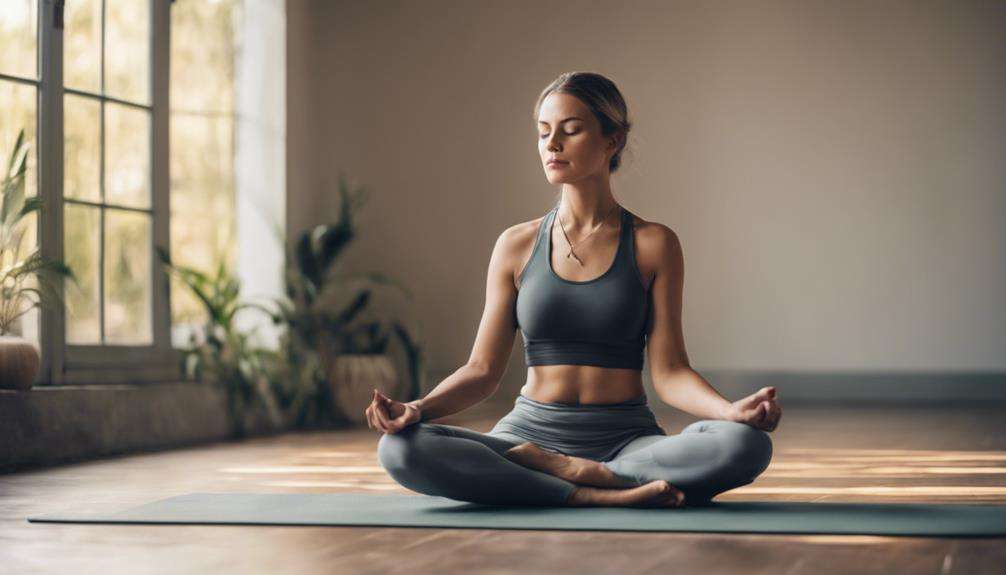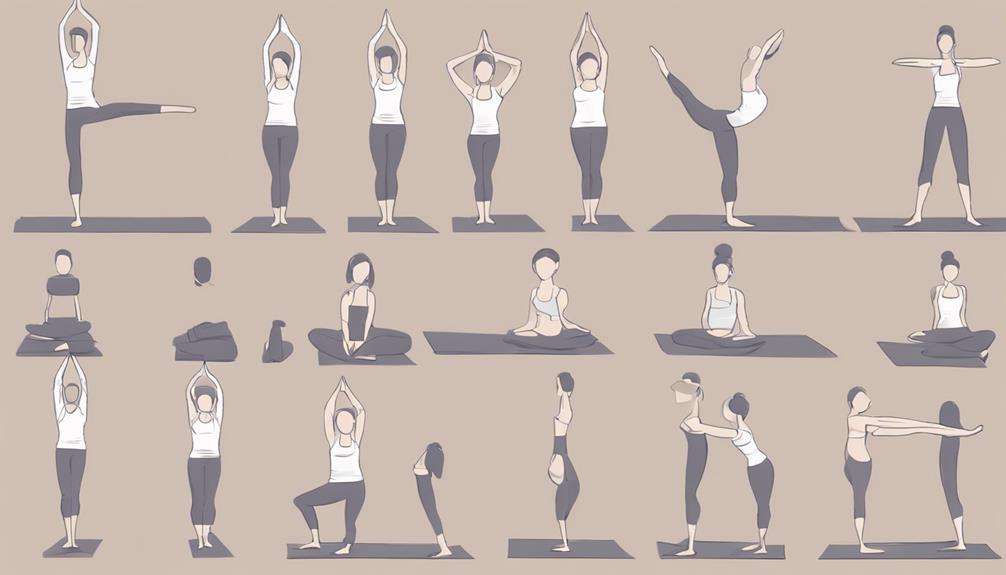If you find yourself hunching over your desk all day, experiencing nagging back pain, or feeling a strain on your spine, there might be a simple solution waiting for you.
Imagine being able to stand taller, move with ease, and feel more balanced throughout your day. Discover how just a few minutes dedicated to specific yoga poses could make a significant difference in your posture and spinal alignment.
The key lies in these seven poses that aim to not only straighten your spine but also bring a sense of strength and essentiality to your body.
Key Takeaways
- Improve posture and spinal alignment with targeted yoga poses.
- Enhance spinal health, flexibility, and strength for better alignment.
- Strengthen core muscles to support and stabilize the spine.
- Increase body awareness and promote overall well-being through alignment practices.
Cat-Cow Pose Alignment
To align your body properly in the Cat-Cow Pose, focus on maintaining a fluid and controlled movement between the arched Cat Pose and the lowered Cow Pose. This dynamic yoga sequence isn't only a great way to warm up the spine but also plays an important role in improving your spinal health and posture.
By moving through the Cat-Cow Pose with awareness and intention, you can enhance the flexibility of your spine, massage your internal organs, and boost circulation in the back. The rhythmic change between the two poses helps in correcting rounded shoulders, easing back pain, and gradually aligning your posture over time.
Additionally, engaging in Cat-Cow Pose regularly can strengthen your core muscles, which are essential for providing stability and support to your spine. By incorporating this pose into your yoga practice, you can cultivate better body awareness and improve your alignment, leading to a more balanced and upright posture.
Embrace the fluidity of the Cat-Cow Pose to nurture your spine and enhance your overall well-being.
Cobra Pose for Posture
From the Cat-Cow Pose alignment, the Cobra Pose in yoga is a beneficial posture for strengthening spine-supporting muscles and promoting better spinal alignment. Cobra Pose targets the back muscles, particularly the erector spinae, which run along the spine and play a key role in maintaining posture.
By engaging these muscles, Cobra Pose helps in correcting postural issues like rounded shoulders, a common problem caused by modern-day activities like prolonged sitting. Additionally, this yoga pose strengthens the core muscles, including the abdominals, contributing to overall body support and alignment.
The extension in Cobra Pose opens up the chest and shoulders, counteracting the forward slouching posture many people develop. Regular practice of Cobra Pose not only enhances spinal health by improving flexibility and alignment but also aids in alleviating back discomfort, ultimately leading to a more upright and balanced posture.
Downward Dog Spine Alignment
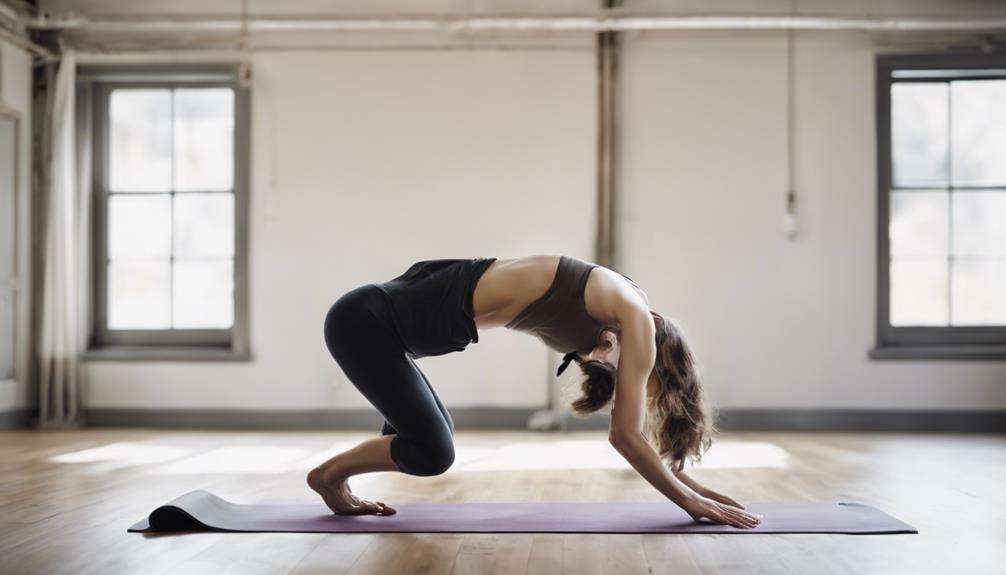
Enhance your posture and strengthen your back muscles with the foundational yoga pose of Downward Dog, focusing on spine alignment and stability.
Downward Dog is a key posture that supports better alignment by lengthening the spine and engaging the upper back muscles. This pose not only strengthens the core muscles but also helps in keeping the spine straight and well-supported. By practicing Downward Dog regularly, you can improve your posture by decompressing the spine and promoting proper alignment.
Engaging in this pose also aids in relieving tension in the spine and increasing overall flexibility. Maintaining the correct alignment in Downward Dog is essential as it prevents slouching, reduces back pain, and contributes to a healthier posture. Remember to focus on keeping your core muscles strong and your spine elongated during this pose to reap the full benefits of improved posture and back health.
Bridge Pose for Posture Support
Bridge Pose is an important yoga posture for enhancing your posture support.
This pose strengthens key muscles like the back, glutes, and core, which are essential for maintaining proper alignment.
Benefits of Bridge Pose
Strengthen your back, glutes, and hamstrings with Bridge Pose to support your spine for better posture. This pose not only strengthens the muscles in your back but also engages your core, promoting good posture.
By practicing Bridge Pose, you can improve spinal flexibility, which is essential for countering the effects of slouching and maintaining proper alignment. Engaging your core and back muscles in this pose contributes to a stable and aligned spine, further enhancing your posture.
Additionally, Bridge Pose has the added benefit of calming the mind and reducing stress, which can positively impact your overall well-being and posture support.
Consistent practice of Bridge Pose can lead to increased strength, improved posture, and better spinal alignment over time.
Proper Bridge Form
To maintain proper alignment and support your spine for better posture, make sure your feet are hip-width apart and parallel to each other in Bridge Pose. Press into your feet and lift your hips towards the ceiling, engaging your glutes to provide support for the spine.
Remember to keep your shoulders relaxed and avoid collapsing into the neck to maintain a neutral spine. Engage your core by drawing the navel towards the spine, enhancing stability during the pose.
Focus on elongating the tailbone towards the knees while lifting the hips to prevent overarching in the lower back and promote spinal alignment. By following these guidelines in Bridge Pose, you can effectively work towards improving your posture and spinal health.
Seated Twist for Spinal Health
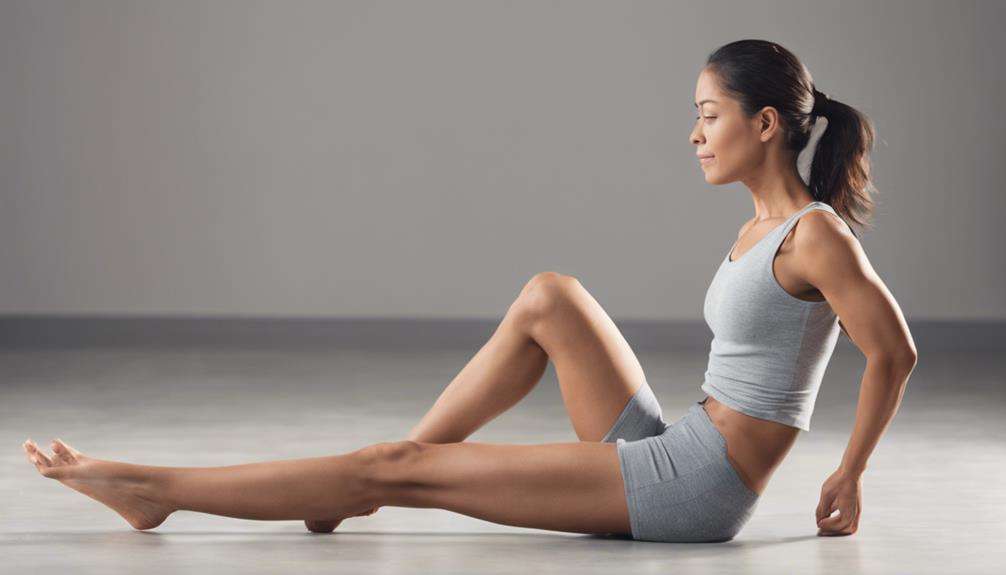
Seated twists in yoga can greatly benefit your spinal health by stretching and strengthening back muscles and ligaments.
To guarantee you reap these advantages safely, focus on maintaining proper alignment throughout the pose to prevent overstretching and potential injuries.
Incorporating seated twists regularly into your routine at a suitable duration and frequency can help improve spinal mobility, reduce stiffness, and contribute to better posture.
Benefits of Seated Twist
Stretching and twisting in a seated position can greatly enhance the health and flexibility of your spine. Seated twists target the muscles and ligaments in your lower back, providing a vital yet effective way to stretch and strengthen them. By incorporating seated twists into your regular practice, you can help alleviate back pain and improve spinal mobility.
These twists create space between the vertebrae, promoting better circulation and relieving discomfort. However, it's essential to avoid overstretching to prevent spasms and potential injuries. Seated twists are beneficial for releasing tension in the spine, contributing to better posture and overall spine alignment. Make sure to practice proper alignment techniques to maximize the benefits of this pose.
Proper Alignment Techniques
Enhance the health and flexibility of your spine by focusing on proper alignment techniques during seated twists for spinal health. When practicing seated twists, pay attention to maintaining a straight back to avoid overstretching that can lead to spasms and potential injuries. Engage your core muscles to support your spine and gently rotate from the waist, feeling the stretch in your back muscles.
Duration and Frequency
To maximize the benefits of seated twists for spinal health, make sure your practice sessions last at least 5-10 minutes each.
Incorporating seated twists into your yoga routine 2-3 times a week can provide the best benefits for your spinal health. Regular practice can enhance spinal flexibility, reduce stiffness, and aid in maintaining proper spinal alignment and posture.
Seated twists are effective in relieving tension in the back muscles, promoting overall spinal health. Consistency is key when it comes to reaping the rewards of seated twists.
Warrior Pose Alignment Benefits
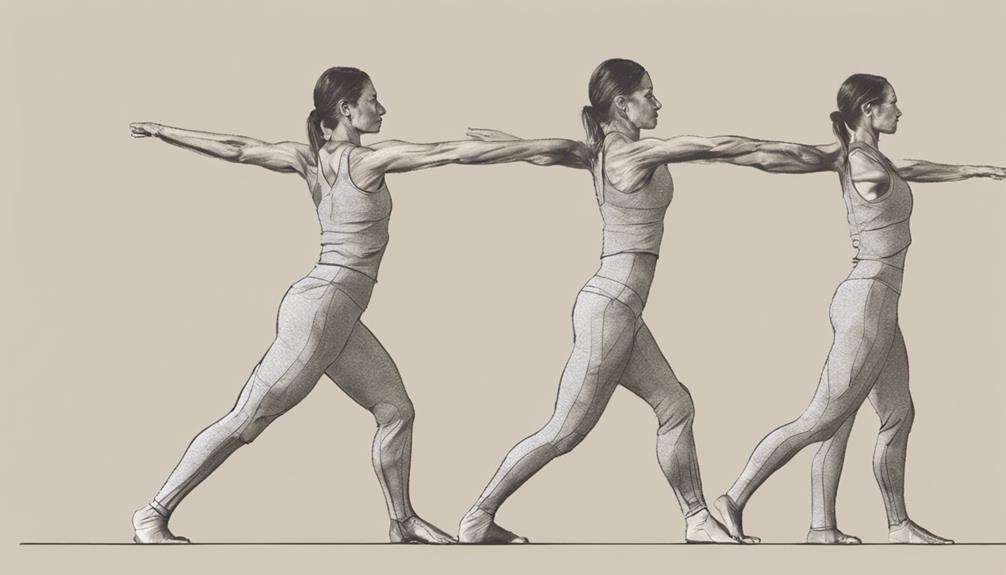
Warrior poses, such as Warrior I, II, and III, play an important role in enhancing posture by strengthening key muscle groups and promoting alignment throughout the body. These poses are beneficial for spinal alignment, as they engage and stretch the muscles along the spine, increasing body awareness and alignment.
By focusing on core strength, Warrior poses help stabilize the torso, which is essential for maintaining good posture. Additionally, these poses aid in opening the chest and shoulders, counteracting the negative effects of slouching and rounded shoulders, therefore contributing to better posture overall.
The alignment principles emphasized in Warrior poses create a sturdy foundation, essential for supporting proper spinal alignment and posture. Consistent practice of these poses can lead to improvements in strength, flexibility, and balance, all of which are important components of good posture and overall well-being.
Integrate Warrior poses into your routine to reap these alignment benefits and enhance your posture.
Child's Pose for Posture Improvement
Stretch and lengthen your spine effectively with Child's Pose to promote better posture by releasing tension and realigning the vertebrae. This yoga pose not only helps in spine alignment but also opens up the hips and shoulders, which can relieve tightness contributing to poor posture.
By gently compressing the abdomen in Child's Pose, digestion is aided, supporting a healthy lower back and enhancing overall posture. Regular practice of this pose can improve your awareness of the spine's natural alignment, encouraging a more upright and balanced posture over time.
Child's Pose serves as a restorative posture that reduces stress and fatigue, promoting relaxation and a sense of well-being, which can positively impact your posture. Incorporating Child's Pose into your daily routine can be a valuable addition to your efforts in improving posture and overall spinal health.
Frequently Asked Questions
How Can I Realign My Spine Myself?
To realign your spine yourself, focus on self-care techniques and personal practices. Engage in home remedies like yoga poses and core-strengthening exercises. Use DIY solutions such as twists and stretches to promote spinal alignment naturally and effectively.
What Is the Asana for Spine Alignment?
To align your spine, try incorporating spinal twists, cat-cow, forward folds, cobra pose, and bridge pose into your routine. These asanas strengthen and stretch your back, promoting better posture and spinal alignment.
How Do You Stretch Your Spine to Fix Alignment?
To stretch your spine for alignment, engage in sitting stretches, standing exercises, core strengthening, flexibility training, and posture correction. Incorporate these activities into your routine to improve spinal health, posture, and overall well-being.
Can Yoga Realign Your Spine?
Can yoga realign your spine? Yes, yoga benefits spine health by focusing on posture correction, alignment techniques, and strengthening exercises. Regular practice can improve flexibility, reduce tension, and enhance overall spinal health over time.
Conclusion
To sum up, incorporating these 7 yoga poses into your daily routine can help align your spine, improve posture, and promote overall spinal health.
Just like a well-oiled machine, your body will move with grace and ease, feeling stronger and more balanced with each practice.
So, roll out your mat, strike a pose, and feel the benefits of a healthy spine supporting you through every movement.
